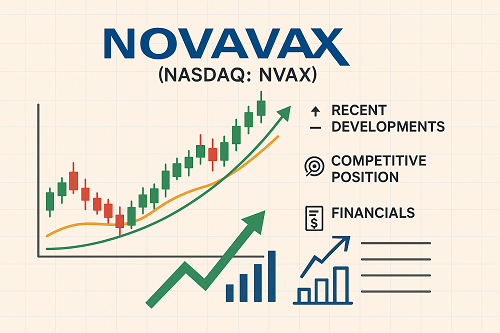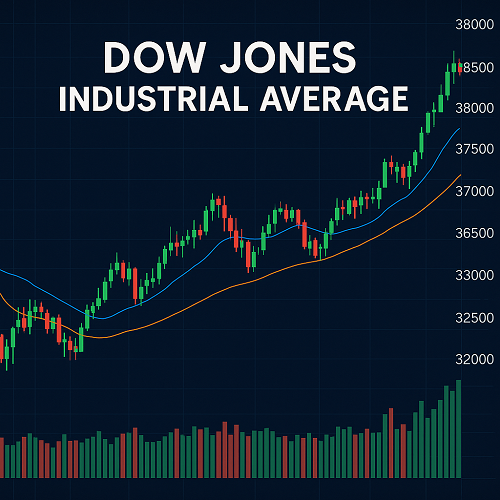Tesla Inc (TSLA) remains one of the most discussed stocks in the market, combining electric vehicles (EVs), energy storage, autonomous driving ambition, and a dominant charismatic founder in Elon Musk.
Yet with its size and visibility come high expectations and steep valuation. Currently, Tesla trades at a premium multiple, with considerable growth baked in — meaning that much of the upside is tied to execution. According to FINVIZ, TSLA has a forward P/E of ~201.38x.
In this article, we dig into the numbers, the drivers, the risks, and the opportunities — and provide actionable context for both traders and long-term investors.
Business Overview & Competitive Landscape
What Tesla Does
Tesla designs, develops, manufactures and sells electric vehicles, energy generation and storage systems. Its segments include automotive, energy generation and storage, and services & other.
Beyond cars, Tesla’s vision includes autonomy (robotaxi), humanoid robotics (“Optimus”), and energy infrastructure — making it more than a traditional auto manufacturer.
Competitive Landscape
Tesla competes with legacy automakers (e.g., General Motors, Ford Motor Company) transitioning into EVs, pure-EV players (e.g., NIO Inc., Rivian Automotive, Li Auto Inc.), and energy solution providers.
In the EV arena, Tesla still enjoys brand strength, global reach (particularly in North America, China, and Europe), and a lead in scale and software integration — although competition is intensifying.
Market and Macro Considerations
- Global EV penetration remains a tailwind but is subject to economic cycles, regulation, commodity costs (especially batteries), and supply chain constraints.
- Tesla’s margin dynamics are influenced by battery cost declines, raw-material inflation, regional cost spreads (China vs U.S. vs Europe), and incentives/tariffs.
- Beyond vehicles, the autonomous driving/robotaxi thesis faces regulatory risk and execution hurdles.
Recent Financial Performance
Q3 2025 Highlights
In Q3 2025, Tesla delivered 497,099 vehicles — about a 5.5% beat versus the ~471,057 estimated. Revenue rose ~11.6 % YoY to ~$28.1 billion.
However, margins compressed: gross margin ~18% (down from ~19.8% a year earlier) and operating margin dropped to ~5.8% (from ~10.8%). Tesla highlighted increased R&D/spend as key headwinds.
Broader Trends
- Sales past 3/5 years: ~21.98 % and ~31.78% growth respectively.
- EPS (TTM) ~1.50. Forward EPS next year ~2.21.
- Profit margin: ~5.51 % (current). Return on equity (ROE) ~7.03%.
- Debt-to-equity low (~0.17) and current ratio strong (~2.07).
Key Observations
- Tesla continues to grow top-line, even in challenging macro conditions, which underlines resilience.
- But margin pressure is real — due to R&D/spend escalation, competitive price pressure, and rising input costs.
- Profitability is decent but not spectacular relative to valuation expectations.
Valuation Metrics & Peer Comparison
Valuation Snapshot
- Forward P/E: ~201x.
- Price-to-sales (P/S): ~15.48x.
- Price-to-book (P/B): ~18.51x.
- PEG (5-yr expected EPS growth): ~33.58.
These metrics imply that the market is pricing in substantial future growth, improvement in profitability and possibly disruption beyond current products.
Peer/Industry Context
For EV and auto-manufacturing peers, valuation multiples tend to be much lower — which reflects Tesla’s premium status and growth narrative.
In Zacks commentary: Tesla’s forward P/E (~211.64) versus industry average (~14.57) at one point.
Implication
- High valuation leaves little margin for error. Under-performance, margin erosion, or competitive shocks could trigger outsized downside.
- On the flip side, execution of new growth engines (robotaxi, energy, autonomy) could justify the premium over time.
Key Growth Drivers
Vehicle Volume and Model Mix
- Tesla’s scale advantage: Model Y remains a global workhorse; new variants and refreshes (long wheelbase, performance) support further demand.
- Expansion of manufacturing capacity globally (Gigafactories in US, China, Europe) to meet demand and lower unit cost.
Autonomy & Robotaxi Vision
- Tesla is targeting unsupervised full self-driving (FSD) and robotaxi rollout across metro areas.
- If achieved, this could open a high-margin new segment and change the derivative valuation model of the business — many investors already price this optionality in.
Energy & Storage Business
- Beyond vehicles, Tesla’s solar panels, roof, and battery storage business give diversified revenue streams and long-term potential.
- As grids decentralize and storage becomes more essential, Tesla is positioned to benefit.
Cost Declines & Technology Leadership
- Battery cost declines, improvements in manufacturing efficiency, and software (including over-the-air updates) create differentiation.
- Tesla’s software/firmware ecosystem (FSD, infotainment) offers higher margin opportunities and recurring revenue potential.
Global Growth & Emerging Markets
- China, Europe, and other emerging markets remain growth frontiers – though competition and regulatory risk apply.
- Tariff/geo-political dynamics play a role but also present on-shoring incentives.
Major Risks & Headwinds
Margin Compression & Rising Costs
As noted in Q3 2025, margins have started to slip. Higher R&D, battery costs, competitive pricing, and raw-material inflation all weigh.
Competitive Intensity
- Traditional auto makers are scaling EVs aggressively; newer entrants (in China especially) are pressure pricing and uptake.
- Tesla’s lead may erode if competitors close the gap in cost, features or service.
Execution Risk (Autonomy & Robotaxi)
- Self-driving regulation and public perception remain major hurdles.
- Monetization of robotaxi business may take longer than expected, delaying premium valuation realization.
Regulatory / China Exposure
- China remains key for Tesla’s growth. Yet recent reports show China sales dropped to a three-year low in October with market share down to 3.2%.
- Tariffs, subsidies, EV quotas, and geopolitical tensions all can impact demand or margin in key markets.
Valuation Bubble Risk
- With such high valuation, any disappointment in growth, earnings, or execution could lead to a sharp re-rating.
- As Zacks flagged: Tesla’s valuation is a premium versus peers and industry.
Technical Analysis & Sentiment
Stock Price & Momentum
- According to FINVIZ, TSLA’s 52-week low is ~214.25 and high ~488.54.
- Volatility is higher than many large caps (Beta ~1.87) indicating elevated risk/reward.
- Recent performance: TSLA has gained ~10.25 % YTD per FINVIZ.
Sentiment Indicators
- Short Float: ~2.60%. Short Ratio: ~0.83.
- Institutional ownership ~48.55%.
- Analyst consensus (via FINVIZ estimate) ~2.65 (on a 1–5 scale where lower is more bullish).
Technical Levels to Watch
- Support near the 200-day SMA (as of the last quote ~SMA200 27.14% above).
- Resistance near recent highs (~488). A break above could trigger momentum; a failure may invite pullback given valuation.
Analyst Forecasts & Price Targets
- According to FINVIZ/Elite data: low target ~$120 (-73%), high target ~$600 (+~40%) and average target ~$399.84 (-10%). Consensus ~Hold (2.65).
- Various firms show wide divergence: For example, one set of upgrades to ~$520.
- The wide spread speaks to the polarized debate: some see massive upside (robotaxi/autonomy), others see risk of re-rating.
Strategic Scenarios: Bull, Base & Bear Cases
Bull Case
- Tesla executes on robotaxi/autonomy, scales energy business, margins improve, global EV penetration accelerates → valuation multiple expands → TSLA moves toward $600+ or more.
- Battery cost declines accelerate, giving margin upside beyond expectations.
- China recovery + emerging market growth accelerates volume.
Base Case
- Tesla continues steady growth (~10-20% volume/year), margins stable but not dramatically improving, competitive pressure remains manageable → valuation holds at current premium → TSLA trades in the mid-$300s to ~$400 range.
- Autonomy remains optionality but not yet value driver.
Bear Case
- Margin erosion, China slowdown, increased price competition, slower autonomy progress → valuation multiple compresses from ~200x to perhaps ~100x or lower → TSLA falls toward the low end (perhaps ~$150-$300) depending on execution and sentiment.
- Regulatory headwinds or negative surprises amplify the downside.
What Traders & Long-Term Investors Should Do
For Traders
- Use volatility to your advantage — watch for breakouts above key resistance or breakdowns below support.
- Consider technicals + news catalysts (e.g., earnings, regulation, autonomy updates).
- Be mindful of risk due to high valuation and potential whipsaw moves.
For Long-Term Investors
- Understand the optionality: Autonomy, energy, scale all matter.
- Evaluate margin improvement path, global rollout, and cost structure.
- Given premium valuation, maybe consider phased allocation: own a core position, then add on execution milestones.
- Monitor key risks: China sales, battery cost inflation, autonomy regulation, competition.
Entry & Exit Framework
- Entry: Preferably on pullbacks or consolidation near support levels, with clear conviction in growth thesis.
- Exit: Consider locking in gains if margin erosion becomes visible, or if valuation multiples begin compressing.
- Stop-loss/hedging is especially important given the high valuation risk.
FAQ
Q1. Is Tesla overvalued?
Yes — by many traditional metrics (P/E, P/S, PEG), Tesla currently trades at a high premium. The premium may be justified only if growth and margin improvements materialize.
Q2. When will autonomy/robotaxi become meaningful for Tesla’s stock?
Hard to predict exactly. It depends on regulatory approvals, deployment scale, monetization model, and cost structure. Investors should treat it as an optional driver rather than guaranteed.
Q3. What happens if China sales continue to slide?
China is a large market for Tesla. A sustained decline or loss of market share would undermine the growth story, impair margins and likely lead to multiple compression.
Q4. Should one buy for energy business exposure?
The energy business is interesting but currently still a smaller portion of Tesla’s total revenue. It can be looked at as diversification and a potential future growth leg rather than the core driver today.
Q5. What is a reasonable price target?
Given current consensus (~$399.84) and potential upside (~$600) but also downside risk (~$120+), one could view ~$350-$450 as a balanced mid-term target under base case assumptions.
Conclusion
Tesla Inc (TSLA) stands at the intersection of multiple megatrends: electrification, autonomy, energy storage, and software-driven industries. The opportunity is significant — but so is the expectation baked into the share price.
For investors, the key questions are:
- Can Tesla sustain volume growth while improving margins?
- Will the autonomy/robotaxi business scale and monetize in a meaningful timeframe?
- Can Tesla maintain its competitive edge amid rising EV competition and global macro challenges?
If yes, the stock has upside potential; if not, the high valuation becomes a vulnerability.
For traders, TSLA offers volatility, momentum and headline-driven moves, but requires careful risk management.
In summary: Tesla remains one of the most interesting stocks on the market. But owning or trading it is not for the faint of heart — given both the upside and the risk.
Use the frameworks above, stay disciplined, and let the execution and fundamentals dictate outcomes.





 XAUT-USD
XAUT-USD  AMD
AMD  MARA
MARA  SHOP
SHOP  BULL
BULL  CL=F
CL=F